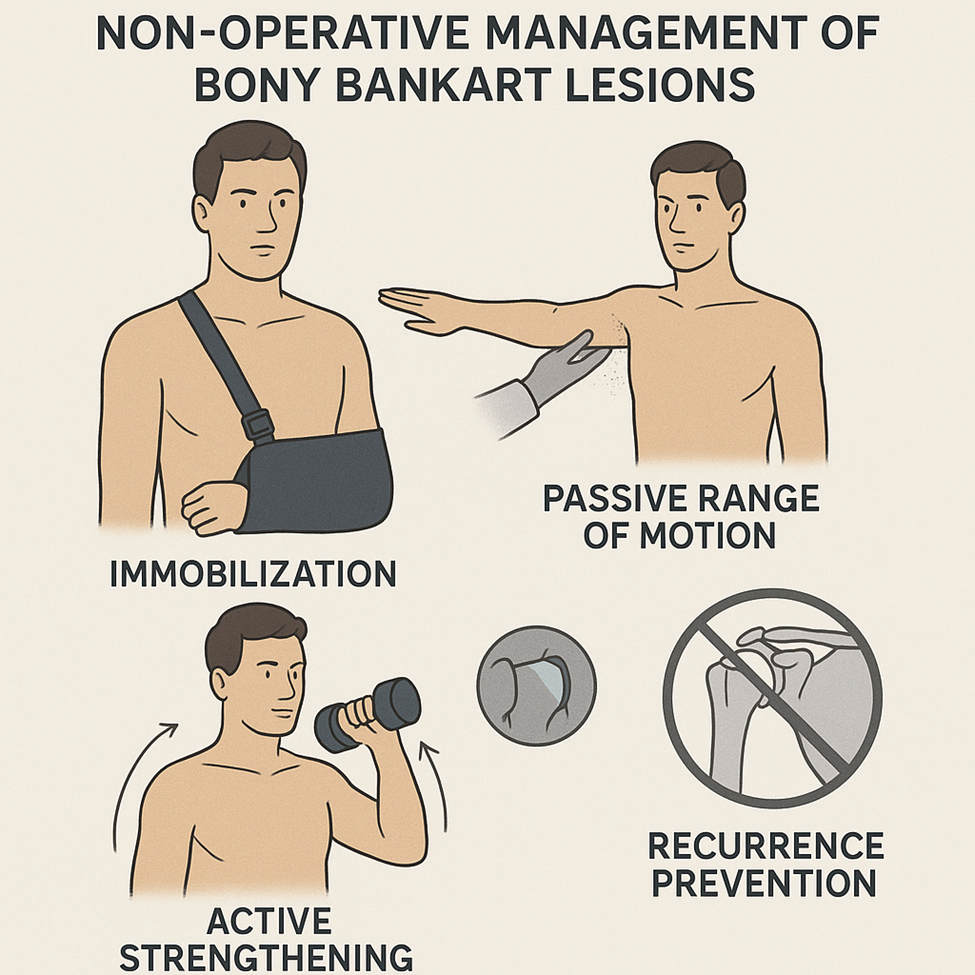Not every Bony Bankart lesion leads directly to surgery. In select cases, conservative treatment can yield excellent results—especially when bone loss is minimal and shoulder stability is preserved. Non‑operative management includes a blend of immobilization, physical therapy, and recurrence prevention strategies. This article outlines when and how these approaches are used, and what factors determine their success.
1. Who Is a Candidate for Non‑Operative Treatment?
Non‑operative care may be appropriate if:
- The bone loss is less than 13–15%
- The shoulder shows no gross instability on physical exam
- It’s a first-time dislocation, particularly in non-athletes
- The patient has low physical demands or prefers to avoid surgery
This pathway requires a dedicated rehab plan and patient commitment to reduce recurrence risk.
2. Initial Management: Immobilization
2.1 Sling Use
Following a dislocation, the arm is typically immobilized in a sling:
- Position: Neutral rotation or slight external rotation
- Duration: 2–3 weeks for most cases
- Helps minimize further soft tissue injury and supports healing
2.2 Imaging During Immobilization
MRI or CT is often performed early to assess:
- Size and position of the bony fragment
- Presence of labral detachment
- Associated injuries (e.g., Hill–Sachs lesions, rotator cuff tears)
3. Phased Rehabilitation Strategy
Phase 1: Passive Range of Motion (Weeks 3–6)
- Gradual reintroduction of shoulder mobility
- Avoid extremes of external rotation and abduction
- Focus on scapular control and postural re-training
Phase 2: Active Range and Strengthening (Weeks 6–12)
- Begin active-assisted and then full active range of motion
- Add isometric strengthening of rotator cuff and deltoid
- Emphasize neuromuscular control and proprioception
Phase 3: Functional Recovery and Sport-Specific Training (Weeks 12+)
- Progressive resistance training
- Plyometrics and sport-relevant drills
- Assess readiness to return using strength and stability benchmarks
4. Preventing Recurrence
4.1 Key Risk Factors
- Young age (<25 years)
- High-demand athletes, particularly in contact sports
- Presence of associated soft tissue injury (e.g., capsular laxity)
4.2 Strategies to Minimize Risk
- Full adherence to physical therapy
- Gradual return to activity, avoiding premature overhead use
- Education on joint protection techniques
- Consider bracing during high-risk activities

5. Monitoring and Long-Term Outcomes
5.1 Follow-Up
Regular follow-up includes:
- Clinical reassessment of stability
- Repeat imaging if symptoms recur
- Adjustments to therapy based on progress
5.2 Success Rates
- Good outcomes reported in non-athletes and older adults
- Recurrence rates vary widely—15–40% depending on age and activity
- Athletes and younger patients often benefit from early surgical consideration
6. When to Transition to Surgery
Non‑operative treatment may fail if:
- Dislocations recur despite rehab
- Imaging shows progressive bone loss or fragment displacement
- Instability compromises function or safety
In these cases, surgical intervention such as arthroscopic Bankart repair or Latarjet may be considered.
FAQs
1. Is a sling absolutely necessary for all Bony Bankart injuries?
While often used in early stages, the decision depends on the severity and patient tolerance. It’s generally helpful for the first few weeks post-injury.
2. Can physical therapy alone stabilize the shoulder long-term?
In select patients, yes. Structured rehab improves neuromuscular control, reducing the risk of recurrence—especially when bone loss is minimal.
3. How soon can an athlete return to sport after non‑operative treatment?
Return typically occurs around 12–16 weeks, but this varies based on sport, progress, and shoulder stability tests.
4. What signs suggest conservative treatment is failing?
Recurrent instability, persistent pain, or reduced function despite therapy are warning signs that surgical options should be revisited.
5. Is bracing effective in preventing redislocation?
Yes, especially in high-risk sports. Shoulder braces can help reduce risky motions and provide proprioceptive support. Non‑operative management of Bony Bankart lesions is a viable path for many patients, especially when bone loss is limited and lifestyle demands are low. Through strategic immobilization, progressive rehab, and proactive recurrence prevention, patients can often regain full function without the need for surgery. However, careful monitoring and clear criteria for surgical referral are essential to ensure long-term shoulder stability.
